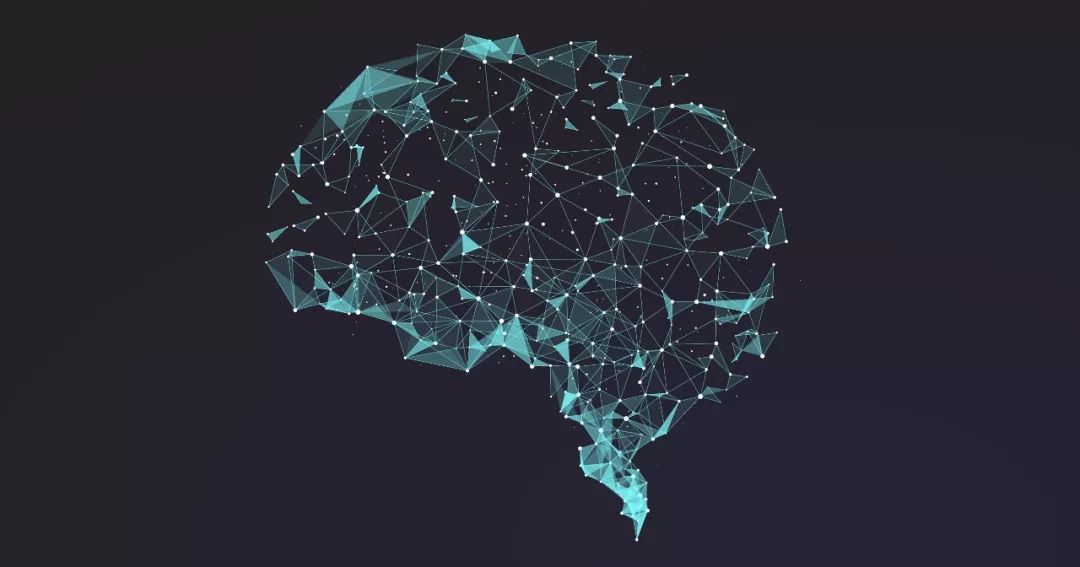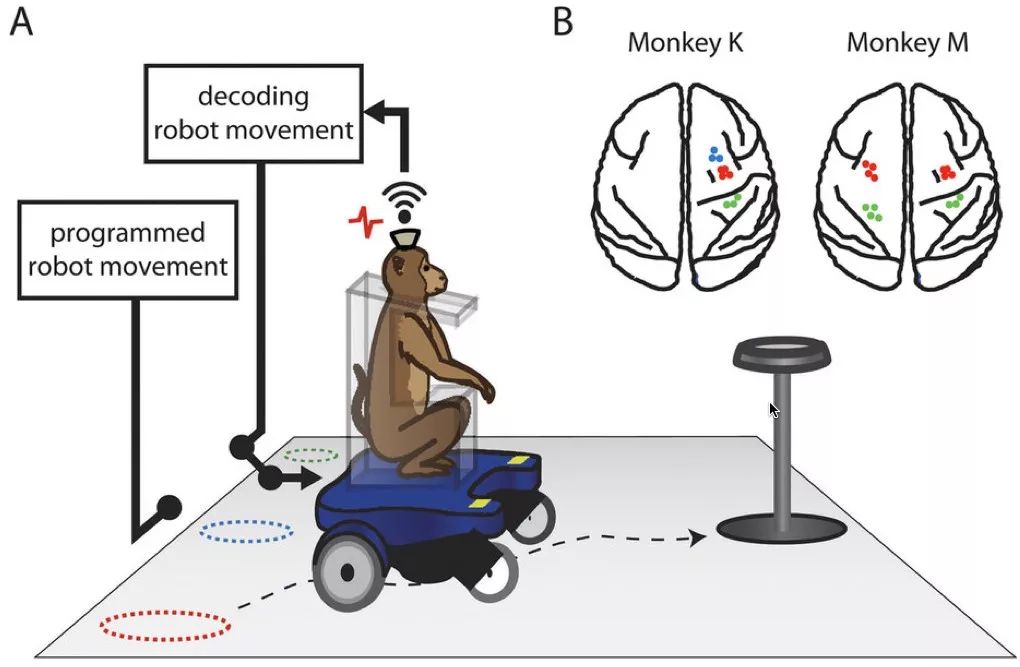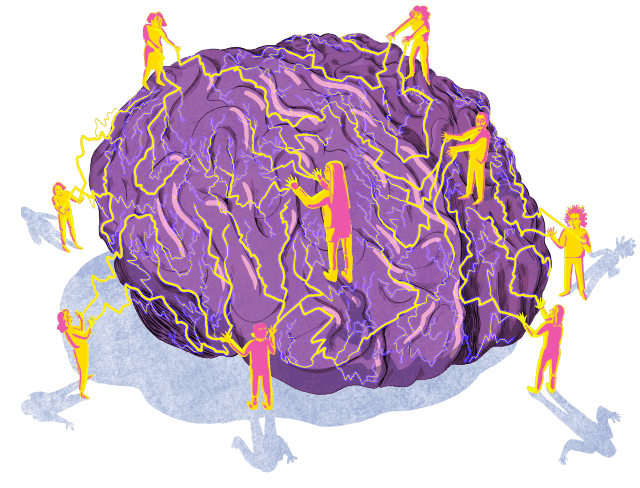In some cases, the brain's ability to adapt seems to be inexhaustible. But by observing brain activity in learning states, scientists have discovered that the brain's neuronal network function is unexpectedly inefficient and inefficient in this process. Learning ability is a sign of human intelligence. Decades of research have shown that our brains can exhibit a high degree of "plasticity," meaning that connections between neurons can be reorganized to respond to new stimuli. But researchers at Carnegie Mellon University and the University of Pittsburgh have recently been surprised to find that neurons in the brain are not as strong in the learning process as they are often associated with learning processes. New connection capabilities. The brain may have a high degree of flexibility and overall adaptability, but at least for a short period of time, it is more dependent on the inefficient recycling of existing patterns from the neuronal bank, rather than re-establishing connections from scratch. "Whenever I play squash, I always look like a tennis player," said Byron Yu, a neuroscientist at Carnegie Mellon University, who is the leading scientist in the study. one. For tennis that has been playing for many years, his problem is that the squash needs a shorter racket and a faster, more powerful shot, which is very different from his previous experience playing tennis. However, in a squash game, he used the habit of playing tennis. This habit has left a deep imprint on him. The brain does not easily give up what it knows. Now, while observing activities in the brain's learning state, Yu and his colleagues have found similar evidence of lack of plasticity at the neural level. This finding and other relevant research from the team may help explain why some things are harder to learn than others. A few years ago, Aaron Batista of the University of Pittsburgh and their lab members began using the brain-computer interface (BCI) as a tool for studying neuroscience. The device's chip size is roughly the same size as a fingernail, allowing one to track the electrical activity of nearly 100 neurons in the brain's motor cortex. BCI can monitor the voltage peaks that pass through each neuron over time to calculate the "spike rate" to represent the behavior of each neuron during task execution. The monkey that controls the movement of the chair through the brain-computer interface Photo credit: Innovation Memes "You can imagine, digging all the data to see how difficult the brain is doing," Yu said. "Our eyes have not been trained enough to find fine patterns." But the chip's built-in advanced statistical analysis function can do this, and the identified patterns can identify the neural activity of the test subject during a particular exercise. For example, the system can tell whether the subject is going to the left or right, up or down when stretching the arm. The researcher can then use the BCI output to convert the neural activity that represents a particular body movement to the directional control of the cursor on the computer screen. Through trial and error and training, the human or animal who manipulates the interface can move the computer's cursor by imagining their arm movements, which can be learned through learning. When Yu, Batista and colleagues monitored their motor cortex while repeatedly performing simple waving tasks on the monkeys, they found that the relevant neurons did not produce independent release activities: the activity of the measured 100 neurons from statistics. It can be replaced with about 10 neurons, which can activate or inhibit other neurons, respectively. In the analyst's analysis, this result is shown as a set of data points that contains a small portion of the 100-dimensional data space. Steven Chase, professor of biomedical engineering at Carnegie Mellon University, said: “We call it the intrinsic manifold (manifolds are spaces with partial Euclidean space properties) because we think this It is an intrinsic characteristic of the brain. The dimensions of this space are highly predictive of the function of these neurons." In 2014, the researchers observed that if the subject's neural activity patterns involve such innate manifolds as they learn new tasks, they can learn new tasks more easily. To say that this result makes sense, because the task of the brain in the innate manifold dimensions is consistent with its underlying neural structure. After completing this study, the team turned its attention to how the neural activity changes during the course of study. They recently published a paper at Nature Neuroscience. In order to find the answer to the above question, researchers first let the primates equipped with BCI master the task of moving the cursor left and right. Then, the team changed the neural activity requirements of the moving cursor and wanted to see what new patterns of neural activity in the brain would appear - if there was a new point in the internal manifold, the animal in question was already The task of moving the cursor is completed under the new condition. Researchers hope to see evidence of learning strategies they call "realignment." In this strategy, the animal will choose one of the most natural start-ups among the newly formed neural activity patterns. Matthew Golub, a collaborator with Zeiss and currently working at Stanford University, said: “Subject to restrictions of inherent manifolds, rearrangement is the best strategy animal can choose.†Or, monkeys The brain may learn through a "rescaling" process - the neurons involved in the initial learning task will increase or decrease their rate of release until they form a new pattern to accomplish new tasks. . But what surprises researchers is that neither rearrangement nor rescale has occurred. Instead, they observed a very inefficient method called "reassociation." The subject animal learns new tasks simply by repeating the initial neural activity pattern and exchanging it. The neural pattern when the cursor was previously moved to the left was used in the task of moving the cursor to the right, and vice versa. "They are repeating what they have done in the past," said Golub. "This is still the case in the new mission." Why does the brain not use optimal learning strategies? The team's findings suggest that, just as neural structures limit the activity of neurons to innate manifold spaces, some of the stronger constraints limit the reorganization of neuronal activity during the experiment. Batista believes that changes in synaptic connections between neurons during rearrangements may be difficult to complete quickly. "The short-term plasticity of the brain is certainly more limited than we thought," he said. "Learning needs to be forgotten. The brain may not be willing to give up what it has learned." Zeiss compared the sports cortex to an old-fashioned telephone exchange. The neural connection is like a cable. It sends input signals from other areas of the cortex to the cerebellum and outputs it. In Zeiss's experiments, the brain "just rearranged these 'cable lines'" - but the implications of this are still unknown. "The emergency strategy is to change the input signal received by the cerebral cortex," Yu said. But he also pointed out that his experiments can only track brain activity for an hour or two. Researchers cannot yet rule out the possibility that reassociation is a temporary way for the brain to learn new tasks quickly: rearrangements or rescales may still occur over a longer period of time. If so, this may explain the difference between novices and experts dealing with new information that they are all interested in. "Beginners will learn everything they start, and experts will consolidate knowledge," Batista said. "This may be the neural basis of this well-known phenomenon." 600Mbps Wireless-wifi Repeater
About
this item
1.
Ideal for
boosting existing network to hard-to reach area, delivering fast and stable
wireless connection, transfer rate up to 600Mbps
2.
Repeater/AP
modes for extending wifi or create wifi hotspot, watch video on line, play
games, online shopping without interference
3.
Activate
passion for your life, mobile devices at full signal, wall mounted design
flexible to place and 7 steps to finish setup
4.
Designed with
mobility and portability, little gadget with great value, One-touch wireless
security encryption with WPS button
5.
Ethernet port
allows the Extender to function as a wireless adapter to connect wired devices,
Compatible with 802.11n/g/b devices
2 Working Modes:(Select
based on your needs)
Repeater Mode
Plug WiFi Booster into your power
socket, easily expand your existing WiFi coverage to signal dead zones
Access Point Mode
Connect your router signal with
Ethernet Cable, cover a wired network to a wireless access point.
600Mbps Wireless-Wifi Repeater,Wifi Amplifier,Wireless Extender,Wifi Booster For Home Shenzhen Jinziming Electronic Technology Co.,LTD , https://www.powerchargerusb.com

